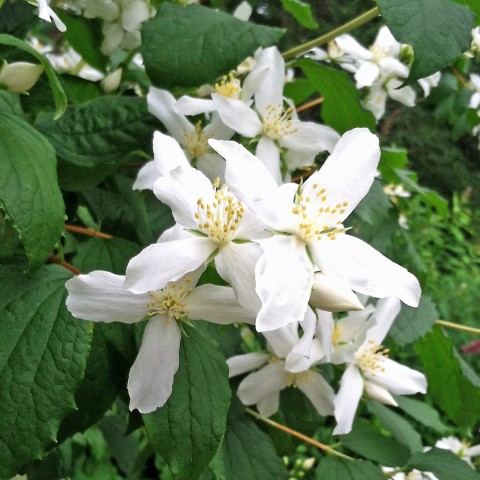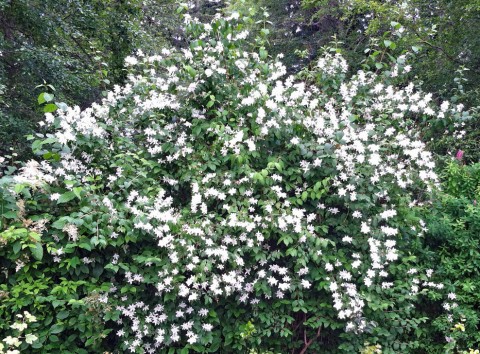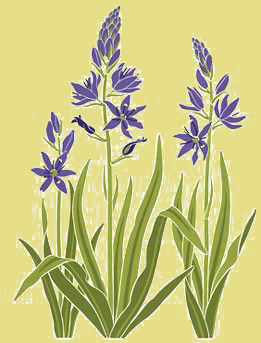Mock Orange


Images by Lindsey Vallance
The native mock orange, Philadelphus lewisii, blooms in mid to late June in the Buck Lake Native Plant Garden. You can see its showy, white, intensely fragrant blooms lighting up the hedgerow that helps define part of the southern edge of the garden.
In the wild, mock orange can be found in various habitats, from moist forest edges to dry open areas. Besides growing in both sun and light shade, it is adaptable to a variety of soils and is drought tolerant, as well. Normally rowing 6'-9' tall and wide, often with long arching canes from its base, it can be pruned to enhance its shape and produce a fuller, more compact, shrub.
Hummingbirds, bees, butterflies and other pollinators are attracted to the blooms of Philadelphus lewisii and many birds, as well as squirrels, eat the seeds. Deer and elk are known to browse the foliage. Mock orange creates cover for birds and small mammals and makes a good addition to a hedgerow planted with a mix of native plants, as we have done in our garden. Alternatively, plant this shrub along an often-used path, where the beauty of its flowers and their glorious fragrance can be enjoyed close at hand.
The wood of mock orange is strong and hard. It was used widely by Native Americans to make small implements and bows and arrows. The leaves and flowers make a foamy lather when bruised and were used for cleansing the skin.
See the links below for more information on mock orange.

